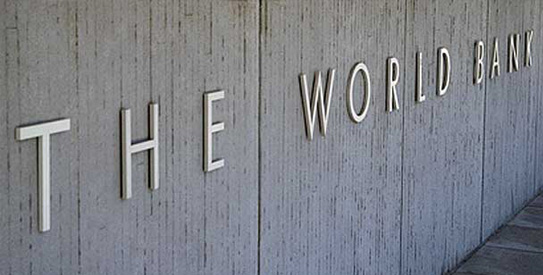
WASHINGTON: Economic activity in Pakistan firmed in the second half of 2011 although it continues to markedly lag behind other nations in South Asia, says a World Bank report released on Wednesday.
Pakistan is South Asia’s second largest economy, representing about 15 per cent of regional GDP.
The World Bank’s Global Economic Prospects report for 2012 warned developing countries across the globe to prepare for further downside risks, as Euro Area debt problems and weakening growth in several big emerging economies dim global growth prospects.
The bank has lowered its growth forecast for 2012 to 5.4 per cent for developing countries and 1.4pc for high-income countries — down from its June estimates of 6.2 and 2.7pc, respectively.
The portion on Pakistan points out that the country’s economy firmed in the second half of 2011. Industrial production surged to grow at a robust 32.1pc annualised pace during the three months ending in October, after falling at 9.1 and 10.1pc rates during the first and second quarters, respectively.
Part of the strengthening in growth reflects base effects due to the widespread flooding that had hampered activity in the second half of 2010. Since the floods occurred in July and August 2010, GDP growth on a fiscal year basis (ending June-2011) slowed to 2.4pc.
The report notes that Pakistan’s weak growth outturns are also tied to “worsening security conditions, accompanied by greater political uncertainty and a breakdown in policy implementation”.
The report also notes that “infrastructure bottlenecks, including disruptions in power delivery,” remain widespread.
A notable bright spot has been a strengthening of exports, evident particularly in the first half of 2011, led by textiles that surged 39pc in the first half of the year.However, like India, Pakistan’s export volume growth saw a sharp fall-off in October.
Indeed, Pakistan’s export volumes fell to a minus 46pc rate in the three-months ending October.
Along with an upswing in worker remittances inflows, robust exports have supported Pakistan’s external positions and contributed to an improvement in the current account from a deficit of 0.9pc of GDP in 2010 to a surplus of close to 0.5pc of GDP in the 2011 calendar year.
The World Bank notes that monetary tightening in Pakistan brought about positive real lending rates in early 2011 as well, the first time since late 2009.
South Asia’s general government fiscal deficit — projected at 8.3pc of GDP in 2011 and significantly higher than in most other regions — is down only slightly from 8.8pc in 2010.
The bank points out that for South Asian nations, including India and Pakistan, domestic crop conditions and price controls are more important determinants of domestic food price inflation.
These factors have contributed to inflationary pressures in the region in 2011. Administered fuel price increases in Pakistan have also contributed to price pressures, although pass through of international price increases has been incremental and partial, such that some targeted local food and fuel prices remain subsidised to varying degrees and below international levels.
Regional monetary policy authorities face several challenges in reducing inflation.
More recently, currency devaluation has contributed to inflation as well. In Pakistan, monetary authorities have also been monetising the deficit, complicating the efficacy of other monetary policy efforts to reduce inflation.
A key factor working against monetary policy efforts is the overall stance of fiscal policy, which despite some consolidation, remains very loose.
Monetary authorities in Pakistan have responded to persistent price pressures by raising policy interest rates and/or introducing higher reserve requirements.
Lower revenue growth has contributed to larger fiscal deficits in Pakistan. Terms of trade losses are estimated at about 1.9pc of GDP for the region in aggregate. India and Pakistan saw negative impacts of close to 1.8pc of GDP – estimated January through September 2011 terms of trade impacts relative to 2010.
Remittance inflow to Pakistan rose by an estimated 25pc in 2011, partly in response to the widespread flooding in the second half of 2010.
International reserve positions in South Asia have generally improved since mid-2008. Latest readings of foreign currency holdings were equivalent to at least three-months of merchandise imports in Pakistan.
Regional inflationary pressures in South Asia are projected to come down over the forecast horizon, assuming continued expansion of crop production in India, Pakistan, Sri Lanka and a decline in international fuel prices – reflecting weaker global activity in 2012.
A good crop year (2011-12) in much of South Asia and sustained high regional stocks are providing a buffer for grain prices and import demand in 2012.
Worker remittances inflows – which were equivalent to 5pc of GDP in 2010 Pakistan – could slow markedly through second round effects of weakened domestic demand in migrant host-countries, largely located in the Arabian Gulf.















































Dear visitor, the comments section is undergoing an overhaul and will return soon.